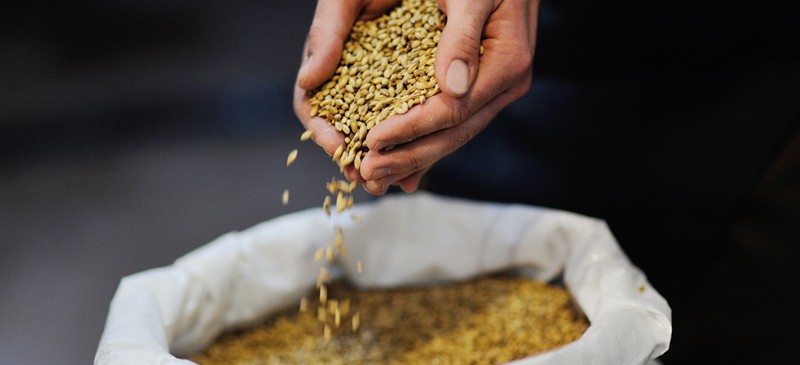This Dr. Axe content is medically reviewed or fact checked to ensure factually accurate information.
With strict editorial sourcing guidelines, we only link to academic research institutions, reputable media sites and, when research is available, medically peer-reviewed studies. Note that the numbers in parentheses (1, 2, etc.) are clickable links to these studies.
The information in our articles is NOT intended to replace a one-on-one relationship with a qualified health care professional and is not intended as medical advice.
This article is based on scientific evidence, written by experts and fact checked by our trained editorial staff. Note that the numbers in parentheses (1, 2, etc.) are clickable links to medically peer-reviewed studies.
Our team includes licensed nutritionists and dietitians, certified health education specialists, as well as certified strength and conditioning specialists, personal trainers and corrective exercise specialists. Our team aims to be not only thorough with its research, but also objective and unbiased.
The information in our articles is NOT intended to replace a one-on-one relationship with a qualified health care professional and is not intended as medical advice.
Malt: a Natural Sweetener and Cereal Grain with Many Nutrients
September 8, 2024

When you think of malt, malted milk balls, milkshakes or other sweet treats may be the first things that come to mind. However, malt is actually incredibly versatile and can be found in a variety of different products, including vinegar, beer, cereals and more.
Although it has been traditionally used as a sweetener and flavor-enhancer, some research has found that swapping the sugar for malt extract could add a pop of extra nutrients to your diet and may be associated with several health benefits, including improvements in mood, heart health and digestion.
So what are the benefits of malt? Should you start switching out the table sugar for this sugar substitute instead? Here’s what you need to know.
What Is Malt?
It is a type of cereal grain, such as barley, that has undergone a drying process known as malting. The cereal grain is first soaked in water to sprout and then dried with hot air to stop germination.
This process causes the grain to develop certain enzymes that are required to break starches into shorter chains of sugars. Other enzymes produced during this process help break the proteins in the grain into smaller amino acids that can be used by the yeast.
Malted grains have a sweet flavor that is often also described as rich, nutty and caramel-like. This makes them a suitable choice as an ingredient for many different foods and products.
Malted grains are considered essential for the process of brewing beer, a type of malt beverage, as well as single malt scotch or single malt whisky, a malt drink that is the product of a single distillery.
Malt barley is also combined with milk powder, flour, salt and sugar to make malt powder. Malt powder is a key ingredient in the malt shake, or malted milkshake.
It can also be used to add a distinct flavor and aroma to malt vinegar, malted milk and cereals as well.
Types
Malt can be broken down into several different categories. For starters, it can be classified as either “diastatic” or “nondiastatic.”
Diastatic means it contains active enzymes. Nondiastatic means that the active enzymes have been deactivated with heat during processing.
It is also typically divided into two separate categories by brewers, including specialty malts and base malts.
Base malts provide fermentable sugars. This means they already contain food for the yeast. These malts need to be mashed during brewing, which helps break down the complex sugars into smaller units that can be consumed by the yeast.
Specialty malts are used to bring a unique taste, aroma or viscosity to beers and are treated with heat, which helps break down the complex carbs into simple sugars without the need for mashing.
Nutrition Facts
Malt, in particular barley malt flour, is very nutrient-dense, in particular the minerals selenium, manganese, copper, iron, phosphorus, magnesium and zinc, along with multiple B vitamins.
According to the USDA food database, 100 grams of barley malt flour contains:
- Calories: 361
- Total Carbohydrates: 78.3 g
- Fiber: 7.1 g
- Sugar: 0.8 g
- Total Fat: 1.8 g
- Saturated Fat: 0.4 g
- Polyunsaturated Fat: 1 g
- Monounsaturated Fat: 0.3 g
- Trans Fat: 0 g
- Protein: 10.3 g
- Cholesterol: 0 mg
- Sodium: 11 mg (0.5% DV*)
- Selenium: 37.7 mcg (69% DV)
- Manganese: 1.19 mg (52% DV)
- Vitamin B6: 0.655 mg (38% DV)
- Niacin (vitamin B3): 5.64 mg (35% DV)
- Copper: 0.27 mg (30% DV)
- Iron: 4.7 mg (27% DV)
- Thiamin (vitamin B1): 0.309 mg (26% DV)
- Riboflavin (vitamin B2): 0.308 mg (24% DV)
- Phosphorus: 303 mg (24% DV)
- Magnesium: 97 mg (23% DV)
- Zinc: 2.06 mg (19% DV)
- Pantothenic acid (vitamin B5): 0.577 mg (11% DV)
- Folate: 38 mcg (9% DV)
- Potassium: 224 mg (5% DV)
*Daily Value: Percentages are based on a diet of 2,000 calories a day.
Health Benefits
1. High in nutrients
Some research shows that malted grains can be a great source of several important nutrients. A study published in the Journal of Food Science and Technology also found that the process of malting was effective at improving the nutritional quality of pearl millet, resulting in an increase in protein and fiber content, plus a reduction in total fat.
As shown in the nutrition facts above, barley malt flour is particularly nutrient-dense. It’s high in minerals elenium, manganese, copper, iron, phosphorus, magnesium and zinc, plus several B vitamins. It also is relatively high in protein and fiber for a flour.
2. Supports digestive health
In addition to its impressive nutrient profile, several studies have found that malt benefits digestive health as well. Studies show malt extract assists with the growth of probiotic cultures, which support gut health — including the good bacteria and gut lining.
This beneficial form of bacteria plays a central role in nearly every aspect of health and disease, with research showing that the health of your gut microbiome can influence immune function, nutrient absorption, cholesterol levels and more.
3. May help promote healthy cholesterol levels
Although more research is needed to evaluate the effects in humans, some studies suggest that malt benefits heart health by helping reduce cholesterol levels.
For instance, one animal model out of South Australia found that feeding rats malted barley helped lower levels of bad LDL and VLDL cholesterol to a greater extent than wheat bran.
Other studies have found that certain compounds found in barley can be effective at lowering cholesterol levels and decreasing belly fat, body mass index and waist circumference. However, additional studies should be conducted to determine whether these findings also apply to malted barley.
4. Boosts mood
One of the most impressive malt benefits is its positive effect on mood and mental health thanks to the presence of hordenine, a compound found in barley that has been well-studied for its mood-boosting effects.
A 2017 study in Scientific Reports took a closer look at the properties of this naturally occurring compound and concluded that hordenine may be responsible for the mood-elevating effects associated with beer, largely due to its ability to activate a specific dopamine receptor in the brain.
5. Enhances digestibility
Studies show that the process of malting may help increase the digestibility of cereal grains by reducing the content of antinutrients. Antinutrients are compounds that reduce the body’s ability to digest and absorb certain nutrients.
One study published in the Journal of Food Research noted that treating sorghum and pearl millet with a combination of malting and fermentation significantly improved the digestibility of protein. It also reduced levels of tannins and phytates, two types of antinutrients that can interfere with nutrient absorption.
How to Use
Malt extract and barley malt syrup are popular ingredients that can be purchased at specialty stores, home brewing supply shops and online retailers.
It is used in a variety of different products, including:
- Malt beer
- Malt-O-Meal cereal
- Malted milkshakes
- Malt vinegar
- Malt powder
- Malt chocolate
- Malt balls
Malt can be used in many ways, including as a natural sweetener and ingredient in beverages, nut butter and baked goods, including bread, crackers and bars.
Keep in mind, however, that this doesn’t mean that all of these foods are healthy or deserve a regular spot in your weekly meal rotation. In fact, malt is actually classified as an added sugar. This means it may be harmful in high amounts and can increase the risk of chronic conditions like obesity, diabetes and heart disease if consumed in excess. (Barley malt flour, however, is relatively low in sugar.)
Therefore, it’s best to enjoy your favorite it in moderation and stick to healthier options to maximize the potential benefits. Cereals made from malted barley, for example, are a better choice than malted milkshakes or balls, which tend to be much higher in calories and added sugar due to the other ingredients that they may contain.
Risks and Side Effects
Despite the many potential benefits, it’s important to keep in mind that malt is still considered an added sugar, which can be harmful if consumed in high amounts. There’s also limited research on how it may impact blood sugar levels.
However, maltose, the main type of sugar found in malt syrup, is broken down into glucose in the body, and some research suggests that malt may have a similar effect on blood sugar levels as regular sugar.
Malted grains do contain several important nutrients, including vitamins, minerals and amino acids, which may make malt a good alternative to regular table sugar for sweetening certain recipes. For those with diabetes, though, you may want to consider swapping other natural sweeteners into your favorite dishes and desserts, such as stevia, to support blood sugar control.
Additionally, most commercial forms are typically made from barley, which means that they contain gluten. For those with celiac disease or a sensitivity to gluten, it’s best to steer clear of products that contain it, including malt syrup, extract and flavoring. Some who are allergic to wheat may also not be able to tolerate barley, so be sure to exercise caution if that’s the case.
Conclusions
- Malt is a type of cereal grain that has undergone a process called malting, which involves soaking the grain in water to help it sprout and then drying it with hot air to stop germination.
- It can be found in many different products, including beer, vinegar, powder, cereal and certain types of desserts.
- In addition to supplying several important nutrients, other potential benefits include improved digestibility, better digestive health, enhanced mood and reduced cholesterol levels.
- However, it is still considered an added sugar, which can contribute to weight gain and chronic disease development when consumed in excess. Maltose, the main sugar found in it, is also broken down into glucose, suggesting that it may also have a similar impact on blood sugar levels as regular sugar.
- Therefore, it’s best to enjoy it in moderation, alongside a diet rich in nutritious foods like fruits, veggies, protein foods and healthy fats.










